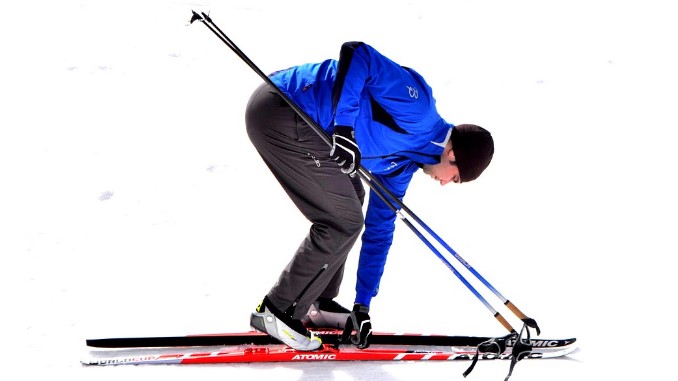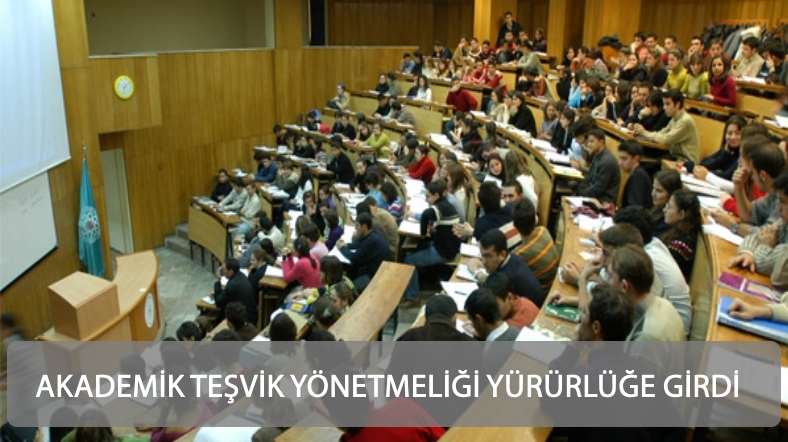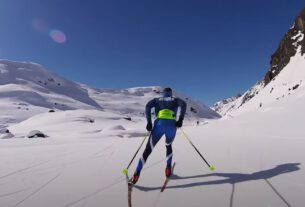No one will argue that cross country skiing is a very technical sport. It takes years of practice before one can understand and properly execute the subtleties of cross country ski techniques, especially if one’s goal is to go fast. “Years of practice” is a wide spread saying and belief (and is actually true…) but do we really understand what that means? To start with, most average club skiers in Canada (some more blessed with their immediate environment than others) won’t ski on snow for much more than 3 months per year (typically end of December to end of March). OK, that’s a start but it’s not exactly a “year” of practicing a skill… So over time, is that good enough to acquire sharp technical skills requiring years of practice? The truth: not even close.
So how can we make up for this 8-9 month gap (more or less…) when we can’t count on reliable snow? Roller skiing of course! Yes there is also ski-striding (simulating diagonal stride on foot and using ski poles) that can be deemed a ski-specific activity in the off-season but it’s still not quite skiing and it’s just not enough by itself to develop all the technical skills that we are looking to develop over time.
What about the virtues of cross training and developing all kinds of general sport skills? We’re all for it! But let’s talk balance here… How much cross training is just right at different ages and stages of development if an athlete’s goal is to become one of the best cross country skiers in the World one day? There is no exact unique answer to that question but in trying to answer that we can at least make some reasonable assumptions:
- If an athlete is going to be a great senior international skier, he or she pretty much needs to be quite competitive already in the final junior years and early senior years. There is ample data supporting this statement.
- So if you are aiming at being a competitive skier at the national and international junior level (19-20 years of age), your technique at high speed throughout hard races will already need to be quite solid by then. Just for the sake of this exercise, let’s say that by 20 years of age you should be very strong technically in all conditions and techniques.
- Now let’s go back to our original statement of “years of practice”. Ok but how many years exactly are we talking about here? Well, again, there is no single specific answer to that question but it is generally accepted in technical sports like cross country skiing (and many more other sports), that the answer is likely to be closer to 8-10 years of quality practice than 1 or 2…
- So what does that translate into? In an ideal world, it means the following progression (most is from CCC’s Athlete Development Matrix BTW):
- Active Start (age 6 and under): Introduction to xc skiing; variety of activities year round; Focus on snow is balance, gliding, diagonal stride without poles; Spend time on skis in addition to team sessions (as many ski playground experiences as possible)
- Fundamentals (6-9 year old): 10 to 15 pre-ski season/classroom sessions (start mid-October); 30 on snow sessions (2x/wk.); Time on skis in addition to team sessions (ski playground experiences); Acquire basic cross-country ski skills (classic and skating); Equal use of techniques; Develop downhill abilities; Focus on balance, agility and rhythm.
- Learning to Train (9-12 year old): Group sessions start mid-September 1X week in off season, 2X week on snow season, up to 70 sessions in total; Skiing minimum 3X per week during the winter and general aerobic activities 3-4 X per week (may include more ski sessions); participate in a variety of sports on a year round basis but start narrowing focus to 3 sports max; continued emphasis on acquisition and refinement of all skiing techniques (both sides for offset and two skate techniques); Skiing from first snow to last snow; Good technique habits are developed through repeated practice.
- Training to Train part 1 (12-14 year old): team practices start mid-September 2-3 X/week off season; 3-4 X/week during snow season; sport specific training 6-9 X week; refinement of all skiing techniques (both sides for offset and two skate techniques); learn to adapt technique to all snow conditions and a variety of trail surfaces and types. NB: Ideally athletes should be introduced to roller skiing (skating to start with) during this stage of development to provide them with enough opportunities to develop and refine their ski specific skills in the off-season.
- Training to Train part 2 (14-16 year old): Year round program (“racers are made in the summer”); sport specific training 6-9 X week from mid-September to end of ski season; refinement of all ski techniques; improve technique adaptations to all snow, track and terrain conditions; focus on performance related technique adaptations (tempo, snap, range). NB: By this stage athletes will hardly be able to meet these technique development goals without significantly increasing their time of roller skis during the off-season (in addition to ski-striding)
- Learning to Compete (16-20 year old): increase sport specific training in the off-season to 7-10 X week; improve technique efficiency with high degree of fatigue; integration of x-c ski racing and training as a lifestyle. NB: By now, athletes will need to roller ski on a regular basis (a few times per week) throughout the off-season and progressively increase training volume throughout the stage. By the end of the L2C stage athletes should have acquired a High Performance level of technical skills at high intensity in all conditions.
All convinced? It now becomes a question of personal goals and making choices accordingly. Just think of high level developing junior athletes in other endurance sports. What are runners doing most of their off-season?: They run. What are cyclists doing most of their off-season?: They bike. What are swimmers doing most of their off-season?: They swim. Again, of course all of these athletes in other endurance sports also do some cross training, but it always remains a fairly low percentage of their total training volume.
For the record, distance training accounts for about 85% of total training volume for Canadian National Ski Team athletes during the off-season. Of that total distance training, 60% is specific (skiing on snow or roller skiing), the other 40% being split between running (30%), cycling (5%) and other activities (5%). Two thirds of intensity sessions are done on roller skis, the other third done running.
This means that senior NST athletes ski or roller ski about 10hrs per week on average throughout the off-season! A normal progression towards that level of training specificity for senior athletes in the off-season (May to October) would be for T2T athletes to ski about 4-5 hrs per week on average during that period and for L2C athletes to ski about 7-8 hrs per week during that period.
So, are you a cross country ski athlete or not?
Stéphane Barrette
Director of Coaching and Athlete Development
Cross Country Canada



